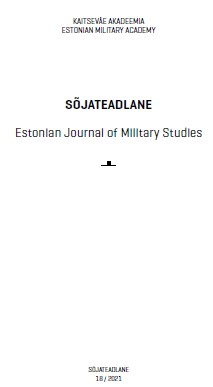AUTONOOMSETE SÜSTEEMIDE KULUMÕJUD
COST IMPLICATIONS OF AUTONOMOUS SYSTEMS
Author(s): Jaan MurumetsSubject(s): Economic policy, Security and defense, Military policy
Published by: Kaitseväe Akadeemia (KVA)
Keywords: autonomous systems; cost analysis; military capability; capability development; risks;
Summary/Abstract: Applying reliable mechanisation, automation, and/or autonomy in well-understood domains (mostly critical non-operational functions) can help to significantly save from expenses and improve efficiency. In some cases, an application of various autonomous systems could improve and enhance the capability of conventional systems used in the operational domain. However, if we only considered saving on personnel and equipment then changes in environmental conditions, the weather, operating theatre factors such as the terrain, and operational tasks would mean that, currently, it is very difficult to fully replace the capabilities of conventional systems with an autonomous alternative. Therefore, it should not yet be considered an option to save on resources. Technology is constantly evolving and should regularly be revisited. Cost is not the only reason for automating systems. Technology could decrease casualties and save lives in many areas, for example in autonomously resupplying the troops on the front line. It is important to continue researching and developing the area of autonomy. The developed methodology enables us to compare existing systems with autonomous alternatives. It is advisable to adopt this approach as a standard for comparing systems. Over time, it will provide us with a more comprehensive understanding of the cost implications of developing autonomy. This study focuses on the cost-related aspects of implying autonomy by using a system of systems approach. We adopted a scenario-based method and considered (1) changes in expenses and (2) changes in performance under circumstances where an existing system is replaced with an autonomous system, noting that automation is not always applied directly in the place of a conventional system. The expenses include second and third order effects. The organisational changes considered herein range from removing human operators from a platform to the potential defence capabilities in the case an autonomous resupply system is used on the front line.
Journal: Sõjateadlane
- Issue Year: 2021
- Issue No: 18
- Page Range: 86-104
- Page Count: 19
- Language: Estonian

